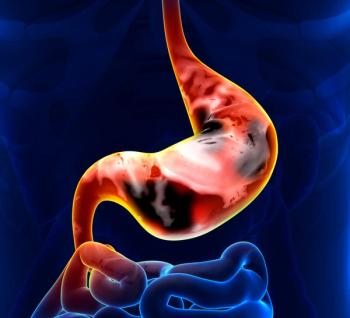
MicroRNA Expression Predictive of Outcomes in Esophageal Cancer
Measuring expression of several microRNAs were significantly predictive of complete pathologic response to treatment in patients with esophageal adenocarcinoma.
Measuring the expression of several microRNAs (miRNAs) was significantly predictive of complete pathologic response to neoadjuvant chemoradiotherapy in patients with esophageal adenocarcinoma, according to a new study. The miRNA test was validated across several cohorts.
Many patients with esophageal adenocarcinomas are treated with preoperative chemoradiotherapy followed by surgical resection, though recent research aimed to use only chemoradiotherapy to avoid the morbidity associated with surgery. “Close to 50% of these patients eventually required surgical salvage within the relatively short follow-up period,” wrote study authors led by Heath D. Skinner, MD, PhD, of MD Anderson Cancer Center in Houston. “The most promising approach to predicting response to therapy in this disease likely involves a combination of biomarkers that would be easily quantifiable, translatable across multiple assessment platforms, and, most importantly, replicable.”
The researchers studied measuring expression of miRNAs as just such a prognostic tool. These non-coding RNA strands are negative gene expression regulators, and several small previous studies have linked expression of individual miRNAs to esophageal cancer outcomes. Results of this study were
The study included three patient cohorts: a discovery cohort with 10 patients, a model cohort with 43 patients, and a validation cohort with 65 patients. All included patients had locally advanced esophageal adenocarcinoma; of 754 individual miRNAs tested in the discovery cohort, four (mir-505*, mir-99b, mir-451, and mir-145*) were found to be significantly predictive of response, were then used to create an miRNA expression profile (MEP) score and were tested in the other cohorts.
In the model cohort, the 4 miRNAs were significantly correlated with pathologic complete response (pCR; P = .008 for trend). The correlation was also significant in the validation cohort (P = .025 for trend), as well as in the combined cohort (P = .00046 for trend). The MEP score was found to be a better predictor of pCR than standard clinical variables such as disease stage and grade. By combining MEP with those other variables, groups of patients with very high and very low chance of pCR can be identified.
The study did have limitations including the possibility that other miRNAs outside the 754 studied in the discovery cohort might have even better predictive value. Also, this study was limited to adenocarcinoma; the authors note that further work in this area in patients with esophageal squamous cell carcinoma is ongoing.
“The MEP score represents the first validated, predictive miRNA signature in esophageal adenocarcinoma,” the authors concluded. “In additional, the MEP score was found to be predictive across three separate assay platforms, arguing for its broad applicability and against experimental artifact.”
Newsletter
Stay up to date on recent advances in the multidisciplinary approach to cancer.
































































































